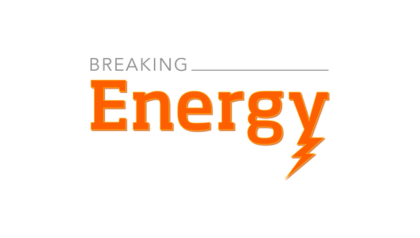
We’re not in 1930 anymore.
The US electric grid of 2030 will confront emergent technology including remote renewables, microgrids and rooftop solar, fleets of electric vehicles and cyber attack threats. Keep reading →

We’re not in 1930 anymore.
The US electric grid of 2030 will confront emergent technology including remote renewables, microgrids and rooftop solar, fleets of electric vehicles and cyber attack threats. Keep reading →

Debates that have preoccupied and in some cases paralyzed growth in the US energy sector could be overshadowed by the development of a single megatrend at the heart of the global economy: the transition to electric drives in machines of all kinds.
While electric vehicles are the most visible aspect of that change, and with roughly 250 million cars on the road any switch from gasoline to electric is significant, the switch from motors driven by their own internal combustion devices to significantly more efficient electric systems is already occurring in many parts of the economy where the infrastructure and the focus on cost reduction already exists. Keep reading →

2011 was the year of natural gas.
Production continued to boom while prices continued to stagnate. As the industry began to comprehend this year just how transformative natural gas will be, the public has also become more aware than ever of hydraulic fracturing (“fracking”), the relatively new technology that has unlocked the vast American underground shale plays. Keep reading →

With renewables tax incentives set to expire, market liquidity seemingly harder than ever to find, a supercommittee fail and EPA regulations pending, many in the energy industry may have a hard time being grateful this year.
But the industry is also at an inflection point, where the dying of old ways is opening possibilities for new beginnings. Keep reading →

The last few years have already seen a dramatic change in discourse on energy issues in the US and globally. But a complex present is laying the groundwork for a new, potentially cleaner, energy future.
Congressional deadlock is allowing two game-changing Environmental Protection Agency rules to pass into law, the Mercury & Air Toxics Standards (known as the Utility Maximum Achievable Control Technology, or MACT, rule) and the Cross-State Air Pollution Rule, CSAPR, which together will cost utilities and ratepayers billions of dollars. Keep reading →

Hundreds of millions of federal dollars from a flagship clean energy grant program were awarded to projects that were well under way before Barack Obama was inaugurated, despite the aim of the 1603 grant program to “primarily” stimulate new projects.
“When the financial crisis hit many developers found that they didn’t have the tax liability that would allow them to claim the credits, so the program was developed to offer an alternative way to continue to incentivize renewable energy development,” a Treasury spokeswoman said. “So, the 1603 program was primarily meant to incentivize new renewable energy projects, but it also supported some existing investments.” Keep reading →

Has the deregulation of the energy industry gone into reverse?
Energy deregulation was a central theme of the 1990s, a trend that swept the developed world as ways to liberate markets were sought out in the wake of seemingly-successful deregulation efforts elsewhere in the economy in the preceding decade. No longer would customers pay out regulated, regular rates to monopoly corporations with lengthy planning timelines and no incentive to cut costs or employees. Creative destruction was the name of the game, and politicians and power regulators got roughly half-way through rewriting the rules of power markets before the implosion of Enron put the brakes on efforts at further deregulation, which have been halting and piecemeal. Keep reading →

Opponents of a new plan to open the Delaware River basin to natural gas drilling renewed their attack on the proposal, saying it fails to determine whether public water supplies will be contaminated by gas extraction.
Environmental groups said the Delaware River Basin Commission, an interstate regulator charged with maintaining water quality in the four-state basin, has ignored their calls for a cumulative impact study on whether aquifers would be polluted by toxic chemicals used in hydraulic fracturing (“fracking“), a process that has facilitated the current boom in obtaining gas from shale beds in many U.S. states. Keep reading →

The Earth’s human population reached 7 billion this week, according to the United Nations Population Fund, shining the spotlight on the world’s infrastructure, water, and energy problems.
To complicate matters further, the UN estimates that by 2050, the population will reach 9 billion. Keep reading →

Energy Politics Supercycle Falters: AOL Energy Comment
By Peter GardettMarkets run in cycles; we are all at the mercy of ups and downs in the macro and micro. Commodities markets, including those for energy, are often held to the dictates of “supercycles.” Infrastructure for commodities is so expensive, development timelines are so lengthy and the underlying shifts in demand and supply occur over such long phases that energy prices and resulting investments rise and fall over decades, not months.
The modern energy economy was born in one great supercycle around the middle of the twentieth century, and we are still its heirs. In the wake of a privately-sponsored boom in energy technology development and deployment in the 1920s, the US government responded to the inequities of the Great Depression of the 1930s by investing in huge electrification projects, choosing technologies, firms and energy types by fiat as it went. Keep reading →